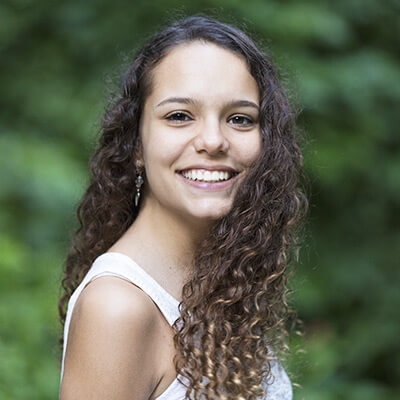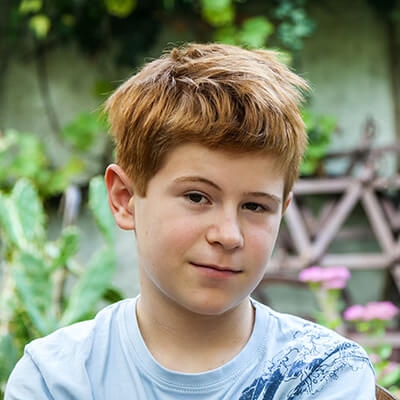Destinations
Where do you want to study?
enforex_pages_inner_three_block_906b560c-7690-4b63-bb22-2500974c3c75
Our summer camp in Madrid is the right place for young people who have their sights set on the future. The sports facilities within the university campus will allow students to enjoy an active lifestyle under the city's characteristic sky.
Do you want your children to experience a different summer this year? Our summer camp in Madrid is international, as it hosts children and young people from more than 62 nationalities. In our university campus, a multicultural environment is created, where students from different cultures and with diverse traditions live together, broaden their horizons, and learn Spanish naturally and almost without realizing it.
In addition to visiting the oldest and most picturesque neighborhoods of Madrid, students will also enjoy cultural excursions to nearby cities such as Toledo, Segovia, Ávila, or Salamanca. Visits to natural parks or nearby places in Madrid like Rascafría are also organized. Back at the camp, they can continue having fun in the green areas of our university campus.
When not in class, campers can participate in a wide variety of activities: contests, movie sessions, cooperative games, sports activities, cultural visits, and much more! Additionally, the university campus has a pool within the premises, available for free use under supervision.
OUR MADRID CAMP
Forget all the clichés about summer camps! In the north of Madrid, with excellent connections to the city center, your children will make the most of the summer at a complete, modern university campus designed for young people. They will have a wide variety of sports, such as soccer, horseback riding, or tennis, and Spanish classes to expand their skills, strengthen their learning, and personal growth.Do you want your children to experience a different summer this year? Our summer camp in Madrid is international, as it hosts children and young people from more than 62 nationalities. In our university campus, a multicultural environment is created, where students from different cultures and with diverse traditions live together, broaden their horizons, and learn Spanish naturally and almost without realizing it.
WHAT TO EXPECT
Madrid is famous for being a multicultural city and our camp is no exception. Our students come from different countries to be inspired by the intense vitality of the capital of Spain.In addition to visiting the oldest and most picturesque neighborhoods of Madrid, students will also enjoy cultural excursions to nearby cities such as Toledo, Segovia, Ávila, or Salamanca. Visits to natural parks or nearby places in Madrid like Rascafría are also organized. Back at the camp, they can continue having fun in the green areas of our university campus.
When not in class, campers can participate in a wide variety of activities: contests, movie sessions, cooperative games, sports activities, cultural visits, and much more! Additionally, the university campus has a pool within the premises, available for free use under supervision.
OPTIONAL SPORTS AND ACTIVITIES
- Soccer
- Tennis
- Paddle Tennis
- Horseback Riding
Summer Camps in Madrid | donQuijote
In our summer camps in Madrid, your children can learn and have fun with optional activities. Join our Summer Camp in Madrid, Spain.
Madrid Summer Camp
In addition to visiting the oldest and most picturesque neighborhoods of Madrid, students will also enjoy cultural excursions to nearby cities such as Toledo, Segovia, Ávila, or Salamanca. Visits to natural parks or nearby places in Madrid like Rascafría are also organized. Back at the camp, they can continue having fun in the green areas of our university campus.
When not in class, campers can participate in a wide variety of activities: contests, movie sessions, cooperative games, sports activities, cultural visits, and much more! Additionally, the university campus has a pool within the premises, available for free use under supervision.
FROM 5 TO 18 YEARS OLD
JUNE 28 TO AUGUST 1
Leaders of Tomorrow
Our summer camp in Madrid is the right place for young people who have their sights set on the future. The sports facilities within the university campus will allow students to enjoy an active lifestyle under the city's characteristic sky.
Do you want your children to experience a different summer this year? Our summer camp in Madrid is international, as it hosts children and young people from more than 62 nationalities. In our university campus, a multicultural environment is created, where students from different cultures and with diverse traditions live together, broaden their horizons, and learn Spanish naturally and almost without realizing it.
OUR MADRID CAMP
Forget all the clichés about summer camps! In the north of Madrid, with excellent connections to the city center, your children will make the most of the summer at a complete, modern university campus designed for young people. They will have a wide variety of sports, such as soccer, horseback riding, or tennis, and Spanish classes to expand their skills, strengthen their learning, and personal growth.Do you want your children to experience a different summer this year? Our summer camp in Madrid is international, as it hosts children and young people from more than 62 nationalities. In our university campus, a multicultural environment is created, where students from different cultures and with diverse traditions live together, broaden their horizons, and learn Spanish naturally and almost without realizing it.
WHAT TO EXPECT
Madrid is famous for being a multicultural city and our camp is no exception. Our students come from different countries to be inspired by the intense vitality of the capital of Spain.In addition to visiting the oldest and most picturesque neighborhoods of Madrid, students will also enjoy cultural excursions to nearby cities such as Toledo, Segovia, Ávila, or Salamanca. Visits to natural parks or nearby places in Madrid like Rascafría are also organized. Back at the camp, they can continue having fun in the green areas of our university campus.
When not in class, campers can participate in a wide variety of activities: contests, movie sessions, cooperative games, sports activities, cultural visits, and much more! Additionally, the university campus has a pool within the premises, available for free use under supervision.
OPTIONAL SPORTS AND ACTIVITIES
- Soccer
- Tennis
- Paddle Tennis
- Horseback Riding
Sorry, there are no available programs in this destination
WHERE WOULD YOU LIKE TO STUDY?
Choose your destination ‹
Want more information?
Get in touch with us for personalized attention
Prices for the Madrid Summer Camp
You can personalize your summer camp with optional activities and extra services
Get your price
Other Summer Camps
enforex_pages_dest_rel_block_502829a8-dc3f-4bd6-bea7-41af13c48420
Wondering what else is out there?



